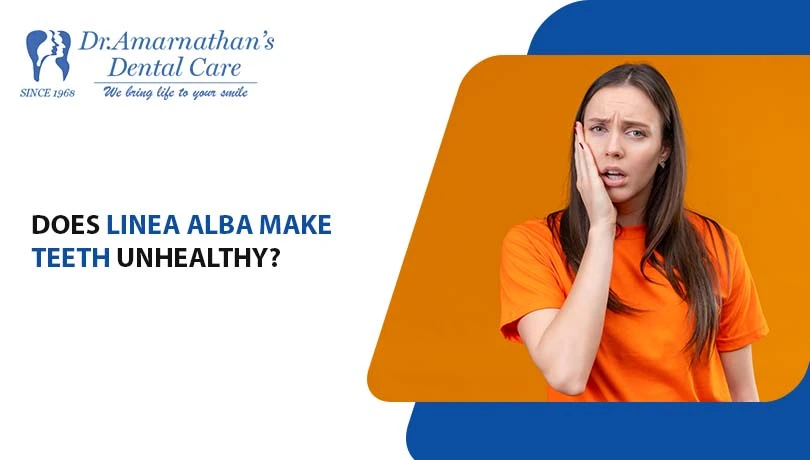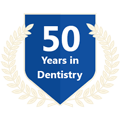
DOES LINEA ALBA MAKE TEETH UNHEALTHY?
Linea alba is a common condition characterized by a white line or ridge that forms along the inside of the cheeks. While this condition is typically harmless, some people worry that it may be detrimental to their dental health.
In this blog post, we’ll explore the Symptoms, whether linea alba can cause major problems for teeth and how to avoid it. So, if you’re curious to learn more about linea alba and its relationship with your teeth, keep reading
What is Linea Alba?
A typical anatomical characteristic of the mouth is the linea alba. When the mouth is closed, the upper and lower teeth meet in a white, occasionally slightly elevated, line of tissue that runs horizontally along the inside of the cheeks. It has nothing to do with how well the teeth are doing. Simple friction or pressure from teeth rubbing across the inside cheeks causes the linea alba. It is a benign and risk-free condition that often has no negative effects on dental health.
Symptoms of Linea Alba
At the junction of the upper and lower teeth on the inside of the cheeks, the linea alba shows as a white or pale line of tissue. In people who have a propensity of clenching or grinding their teeth, it is frequently more obvious.
Causes
Repetitive pressure or friction from the teeth against the inner cheeks is the main contributor to linea alba. This happens frequently, especially when chewing, talking, or clenching the jaw.
Texture
The linea alba’s texture can be different. Due to the thicker tissue, it may occasionally seem somewhat elevated or scratchy to the touch. But it normally doesn’t hurt and doesn’t make you uncomfortable.
Location
Where the upper and lower teeth meet in the mouth is where the linea alba normally originates bilaterally, appearing on both sides of the mouth. It may run parallel to the dental arches.
Diagnosis
During a typical dental examination, dentists and other oral health specialists can quickly identify linea alba through a visual inspection.
Harmlessness
Linea alba is a benign and not harmful disorder. It does not indicate the presence of any dental or oral health issues. It is regarded as a typical variation in oral anatomy.
Do linea alba teeth cause major health problems?
No, linea alba does not inherently pose a serious health risk. It is regarded as a typical variation of oral architecture and is a benign and innocuous disorder. Linea alba does not cause any serious dental or general health problems; it is just the consequence of friction or pressure from the teeth pressing against the inside of the cheeks.
The linea alba is a normal finding and carries no significant health risks. It has no connection to gum disease, tooth decay, or any other serious oral health issues. However, it’s always a good idea to check with a dentist for a comprehensive evaluation and advise if you are noticing any other symptoms or changes in your oral health.
To protect your general oral health, it’s crucial to maintain consistent oral hygiene routines including brushing, flossing, and routine dental exams. A dental expert can give you reliable information and advice if you have worries about linea alba or any other element of your oral health.
How to avoid linea alba?
The linea alba is a typical and harmless condition caused by tooth friction or pressure against the inner cheek tissue. It is not something that should be avoided because it is a natural occurrence. However, if the presence of Linea alba disturbs you or if you want to reduce its incidence, try the following suggestions:
Keep Good Oral Hygiene
Regular brushing and flossing, for example, can help prevent any irritation or inflammation in the mouth that may contribute to linea alba.
Proper Dental Alignment
If your teeth are misaligned or you have a malocclusion (bad bite), the friction between your cheeks and teeth will be increased. Consult an orthodontist if you suspect your dental alignment is causing the problem.
Reduce Cheek Biting or Chewing Habits
Some persons have a propensity to bite or chew on the inside of their cheeks or things such as pens or pencils. Reducing these behaviors can aid in reducing the friction that causes linea alba.
Dietary Changes
Consuming foods that are too abrasive or rough may contribute to mouth irritation. Maintain a healthy diet and avoid foods that appear to aggravate the disease.
Hydration
Staying hydrated can help keep your mouth’s mucous membranes moist, thereby minimizing friction.
Oral Rinses
A gentle, alcohol-free mouth rinse or salt water rinse may help relieve irritation and minimize the appearance of linea alba.
Lip and Cheek Care
Applying a light lip balm or moisturizer to the insides of your cheeks and lips can help keep the tissues nourished and decrease friction. Wearing a nightguard can help protect your cheeks from excessive pressure and friction if you grind your teeth or clench your jaw while sleeping.
Remember that linea alba is not a dangerous condition that usually does not require treatment. However, if you have any concerns or the issue worsens, it’s always a good idea to consult with a dentist or oral health specialist for personalized advice and guidance.
Conclusion
Linea alba in teeth is a harmless, natural occurrence caused by everyday friction between teeth and cheeks. It serves as a reminder of the complex interactions within our mouths and the delicate balance that keeps oral health in check. Although it does not pose serious health risks, it contributes to our overall well-being. A holistic approach to oral health, including regular dental treatment and accepting our unique physiological qualities, helps us appreciate our bodies and maintain beautiful smiles.




